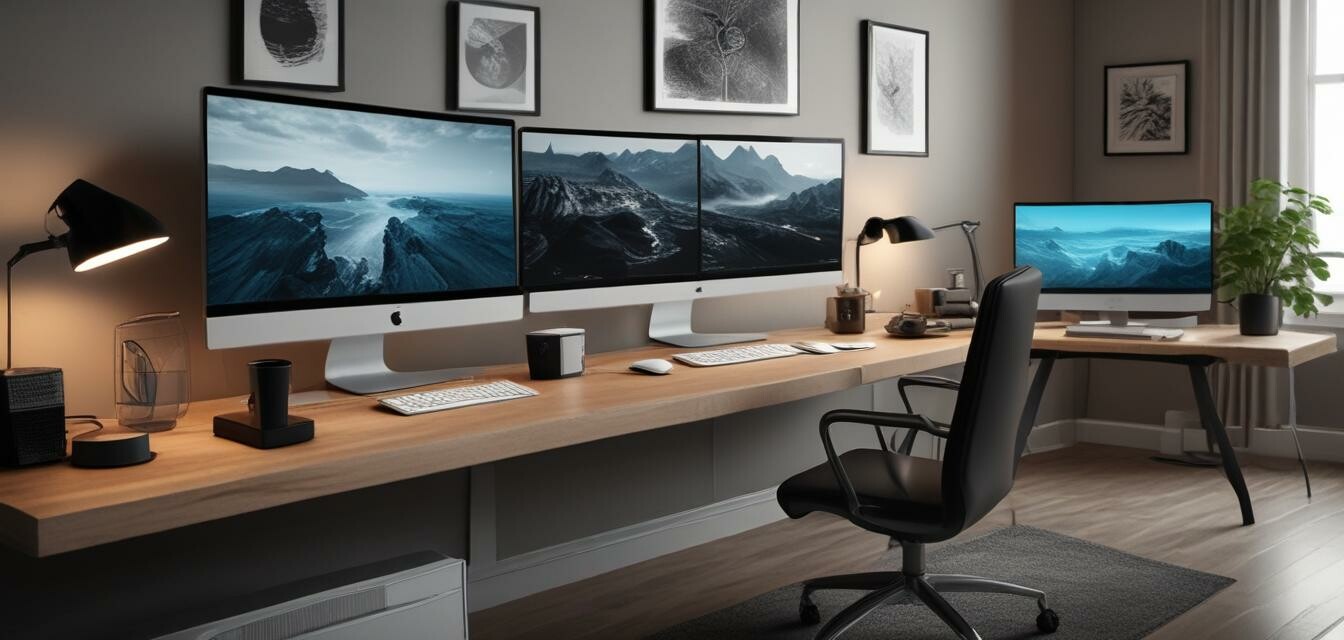
Impact of Remote Work on Home Office Tech Market
Key Takeaways
- The rise of remote work has significantly influenced the demand for home office technology.
- Consumers are increasingly seeking ergonomic solutions for improved comfort and productivity.
- Multi-monitor setups are gaining popularity as remote workers aim for enhanced workflow.
- There is a growing demand for reliable wireless networking solutions to support remote work efficiency.
- Docking stations are becoming essential for creating cohesive and adaptable workspace setups.
The COVID-19 pandemic has reshaped many aspects of our lives, and one of the most notable shifts has been in the way we work. With remote work becoming a mainstay for many companies and employees, the demand for home office technology has soared. This article delves into how this shift has impacted the home office tech market, highlighting key trends in product usage and consumer expectations.
Market Growth and Trends
In recent years, the home office technology market has been on an upward trajectory. As companies embrace flexible working models, employees are investing in their workspace like never before. Let's take a closer look at specific trends:
1. Increased demand for ergonomic furniture
Prolonged hours in front of screens have prompted many to seek solutions that improve comfort. Ergonomic chairs and desks have become staples in modern home offices.
| Ergonomic Solution | Benefits |
|---|---|
| Ergonomic Chairs | Support posture and reduce discomfort during long working hours. |
| Standing Desks | Encourage movement and reduce sedentary behavior. |
| Adjustable Desks | Allow users to switch between sitting and standing positions easily. |
2. Rise of multi-monitor setups
Having multiple screens enhances productivity by allowing users to multitask more effectively. Businesses are recognizing this need, leading to an increase in sales of multi-monitor stands and displays.
3. Importance of quality networking solutions
As remote work relies heavily on internet connectivity, the demand for reliable wireless networking solutions has surged. Consumers are looking for products that ensure a stable connection for video calls and data transfers.
- Wi-Fi Routers
- Range Extenders
- Mesh Networking Systems
Changing Consumer Demands
The challenge for manufacturers is not just to keep up with demand, but to adapt to changing consumer preferences. Here are some notable shifts:
1. Focus on aesthetic appeal
Today's consumers are not only looking for functionality but also for products that match their home decor. A stylish setup is increasingly important.
2. Sustainability considerations
Eco-friendly products are gaining traction as consumers become more environmentally conscious. This is prompting manufacturers to innovate with sustainable materials.
Market Predictions
Looking forward, analysts predict continued growth in the home office tech market as the need for efficient setups persists. Remote work is likely to remain part of the corporate culture, shaping consumer spending habits on technology.
| Product Category | 2022 Sales | 2023 Sales (Projected) |
|---|---|---|
| Ergonomic Chairs | $1.2 Billion | $1.5 Billion |
| Multi-Monitor Stands | $800 Million | $1 Billion |
| Docking Stations | $600 Million | $750 Million |
| Wireless Routers | $900 Million | $1.1 Billion |
Conclusion
The rise of remote work has undeniably transformed the home office tech market. The trends we have observed reflect a broader change in how consumers approach their work environments. As companies and freelancers alike adapt to this new way of working, the demand for innovative and effective home office solutions will continue to grow. To explore more about setting up your home office effectively, check our guide on Buying Guides, or discover the latest trends in tech under our News and Trends section.
Pros
- Enhanced productivity through better technology solutions.
- Increased focus on comfort with ergonomic designs.
- Greater flexibility in work environments.
Cons
- Potential overspending on non-essential gadgets.
- Challenges in managing distractions at home.
- Fast-paced technological changes may cause investment fatigue.